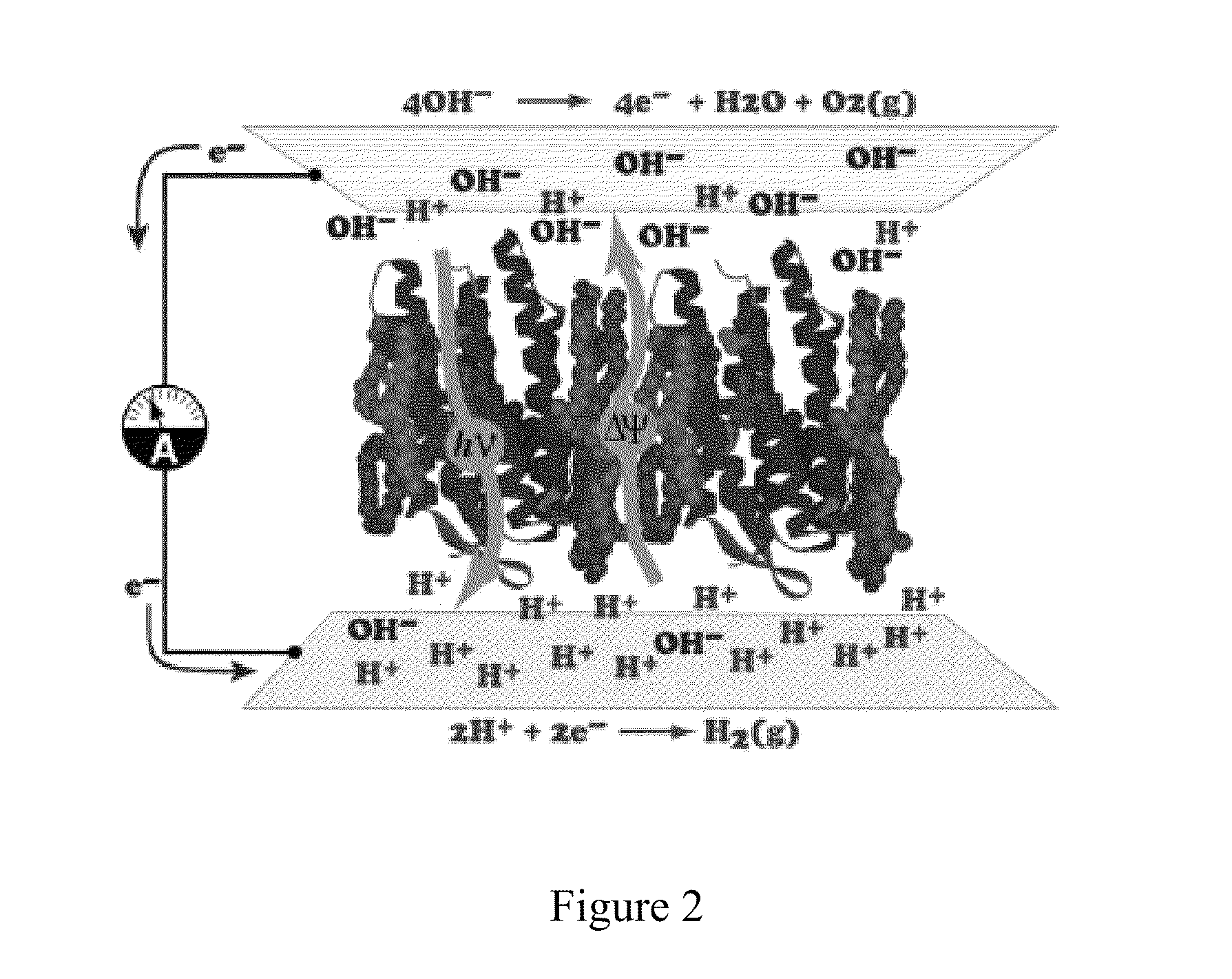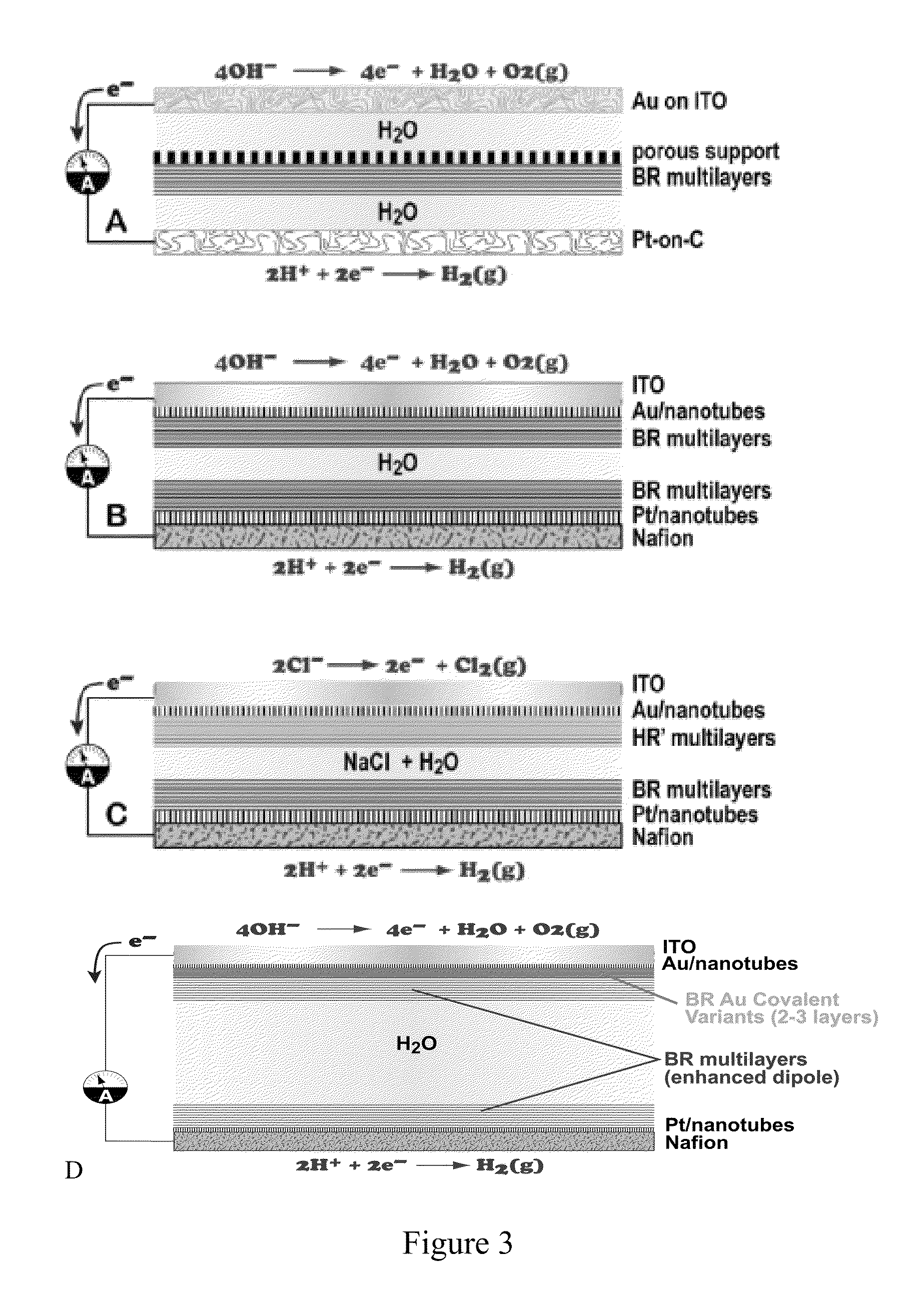Protein-based photovoltaics and methods of use
a protein-based, photovoltaic technology, applied in the direction of energy input, sustainable manufacturing/processing, final product manufacturing, etc., can solve the problems of environmentalists no longer considering photovoltaic energy conversion, low efficiency of amorphous silicon cells, and high cost of cells, etc., to achieve the effect of enhancing proper orientation and packing
- Summary
- Abstract
- Description
- Claims
- Application Information
AI Technical Summary
Benefits of technology
Problems solved by technology
Method used
Image
Examples
Embodiment Construction
[0017]Protein-based photovoltaic cells, bacteriorhodopsin mutants, and the production and use of photovoltaic cells and bacteriorhodopsin mutants are described herein. The protein is a rhodopsin molecule, preferably bacteriorhodopsin. In one embodiment, the protein in the protein-based photovoltaic cells is bacteriorhodopsin. In an embodiment in which the protein is used to split brine, the rhodopsin can be halorhodopsin. In another embodiment, the protein is a bacteriorhodopsin mutant or combination of mutants that enhance packing, orientation, thermodynamics or combinations thereof. In yet another embodiment, the protein is a halorhodopsin mutant or combination of mutants that enhance orientation and packing of halorhodopsin molecules in thin films.
[0018]The bacteriorhodopsin mutants provided herein have particular characteristics useful for the generation of solar energy. One group of mutants described herein have the ability to pump chloride anions. These bacteriorhodopsin mutan...
PUM
| Property | Measurement | Unit |
|---|---|---|
| volume | aaaaa | aaaaa |
| volume | aaaaa | aaaaa |
| volume | aaaaa | aaaaa |
Abstract
Description
Claims
Application Information
 Login to View More
Login to View More - R&D
- Intellectual Property
- Life Sciences
- Materials
- Tech Scout
- Unparalleled Data Quality
- Higher Quality Content
- 60% Fewer Hallucinations
Browse by: Latest US Patents, China's latest patents, Technical Efficacy Thesaurus, Application Domain, Technology Topic, Popular Technical Reports.
© 2025 PatSnap. All rights reserved.Legal|Privacy policy|Modern Slavery Act Transparency Statement|Sitemap|About US| Contact US: help@patsnap.com



